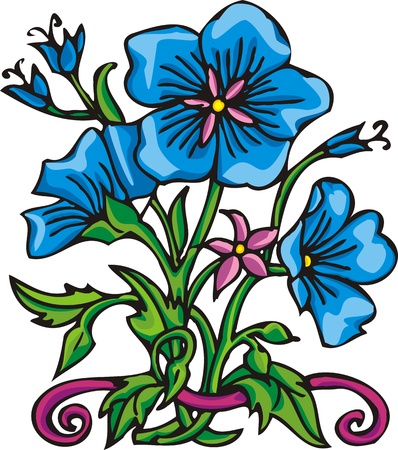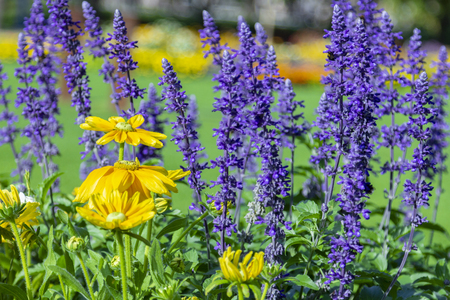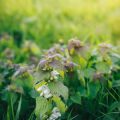1. Introduction to Native Wildflowers in American Gardens
Adding native wildflowers to your garden is one of the easiest and most rewarding ways to create a beautiful, low-maintenance landscape that supports the local environment. Unlike exotic plants, native wildflowers have evolved over thousands of years alongside regional weather patterns, soil types, and wildlife, making them perfectly suited for their specific ecosystems across the United States.
Whether youre gardening in the sunny Southwest, the humid Southeast, or the cool Northeast, theres a wide variety of native wildflowers that can thrive in your area. These flowers not only add vibrant color and texture to your outdoor space but also bring important ecological benefits.
Why Choose Native Wildflowers?
Native wildflowers offer several key advantages for American gardeners:
| Benefit | Description |
|---|---|
| Ecological Sustainability | Native species require fewer resources like water and fertilizers because they are adapted to local conditions. |
| Support for Pollinators | They provide essential food and habitat for bees, butterflies, birds, and other beneficial insects. |
| Low Maintenance | These plants are generally more resistant to pests and diseases, reducing the need for chemicals and upkeep. |
Connecting Gardens with Nature
By planting native wildflowers, you help restore natural habitats in your own backyard. This can be especially impactful in suburban or urban areas where development has reduced native plant populations. A garden full of wildflowers becomes a mini ecosystem that encourages biodiversity and helps maintain a healthy balance in nature.
A Region-by-Region Approach
Since different parts of the U.S. have unique climates and ecosystems, choosing the right native wildflowers depends on where you live. In the next sections of this series, well explore the top 15 native wildflowers by region—from the Pacific Northwest to the Great Plains—so you can select plants that will flourish in your specific environment.
Stay tuned as we dive into each region’s best choices for vibrant, sustainable gardens filled with life and color.
2. Northeast Region: Hardy Blooms for Four Seasons
The Northeast is known for its distinct four seasons, rich soil, and varying elevations—from coastal areas to mountain ranges. These conditions make it a unique region for gardening with native wildflowers that can thrive in both hot summers and cold, snowy winters. Below are some of the best native wildflowers that not only survive but also bring vibrant color and ecological benefits to gardens throughout the year.
Why Choose Native Wildflowers in the Northeast?
Native wildflowers are naturally adapted to local climate, pests, and soil conditions. This means they generally require less maintenance, water, and fertilizer than non-native species. They also support local pollinators like bees, butterflies, and birds.
Top Native Wildflowers for the Northeast
| Wildflower Name | Bloom Time | Light Requirements | Benefits |
|---|---|---|---|
| Black-Eyed Susan (Rudbeckia hirta) | Summer to Fall | Full Sun | Drought-tolerant; attracts pollinators |
| New England Aster (Symphyotrichum novae-angliae) | Late Summer to Fall | Full Sun to Part Shade | Nectar source for monarch butterflies |
| Columbine (Aquilegia canadensis) | Spring | Part Shade to Full Shade | Loved by hummingbirds; early bloomer |
| Bluets (Houstonia caerulea) | Spring to Early Summer | Full Sun to Part Shade | Adds delicate texture; ground cover option |
| Purple Coneflower (Echinacea purpurea) | Midsummer to Fall | Full Sun | Drought-resistant; seed heads feed birds in winter |
Caring Tips for Northeastern Wildflower Gardens
- Select well-draining soil: While many native plants are adaptable, good drainage helps prevent root rot during snow melt and spring rains.
- Add mulch in fall: Protect roots from harsh winter temperatures with a layer of organic mulch.
- Avoid overwatering: Once established, most native wildflowers thrive with minimal watering.
Create Seasonal Interest Year-Round
You can mix early bloomers like Columbine with late-season stars such as New England Asters to keep your garden colorful from spring through fall. Don’t forget to leave seed heads over winter—they provide food for wildlife and create visual interest against the snow.

3. Southeast Region: Colorful Adaptations for Heat and Humidity
The Southeast is known for its long, hot summers and high humidity levels. Native wildflowers in this region have evolved to thrive in these conditions, offering both beauty and durability. These plants are not only low-maintenance but also attract pollinators like butterflies, hummingbirds, and bees.
Top Wildflowers for the Southeast
Here are some of the most popular native wildflowers that perform exceptionally well in southern gardens:
| Wildflower | Color | Bloom Time | Pollinator Friendly |
|---|---|---|---|
| Coreopsis (Coreopsis spp.) | Bright Yellow | Late Spring to Fall | Yes – Attracts bees and butterflies |
| Scarlet Sage (Salvia coccinea) | Red | Summer to Fall | Yes – Hummingbird favorite |
| Eastern Purple Coneflower (Echinacea purpurea) | Purple-Pink | Summer to Early Fall | Yes – Loved by bees and butterflies |
| Black-eyed Susan (Rudbeckia hirta) | Golden Yellow with Dark Center | Midsummer to Fall | Yes – Supports native pollinators |
| Butterfly Weed (Asclepias tuberosa) | Orange | Early to Late Summer | Yes – Important for Monarch butterflies |
Why Choose Native Wildflowers?
Southeastern native wildflowers are naturally suited to the region’s climate and soil. They require less water once established, resist local pests, and help maintain ecological balance. These flowers can handle heat waves and heavy rainfall better than many non-native species.
Tips for Growing Southeastern Wildflowers:
- Select a sunny spot: Most native wildflowers prefer full sun for optimal blooms.
- Avoid overwatering: Once established, many of these plants are drought-tolerant.
- Add mulch: Helps retain moisture and suppress weeds.
- No need for fertilizers: Native plants typically thrive in existing soil conditions.
Create a Pollinator Paradise
If you want your garden to come alive with butterflies and birds, mixing different bloom times ensures color from spring through fall. Combining perennials like Coreopsis with annuals such as Scarlet Sage will offer continuous interest throughout the growing season.
The Southeast’s native wildflowers are more than just beautiful—they’re smart choices for sustainable gardening in warm, humid climates.
4. Midwest Region: Prairie Beauties and Grassland Favorites
The heartland of America is known for its vast open prairies, rolling fields, and changing seasons — from snowy winters to hot, humid summers. This regions native wildflowers are tough, beautiful, and well-adapted to these dynamic conditions. Whether youre planting in Illinois, Kansas, or Minnesota, native perennials like Coneflowers and Prairie Blazing Stars thrive with little maintenance and provide vital habitat for pollinators.
Why Choose Native Wildflowers for the Midwest?
Midwestern native wildflowers are built to handle the region’s climate extremes. They’re drought-tolerant, cold-hardy, and resilient against pests. Plus, they support local bees, butterflies, and birds — making your garden not just beautiful but also ecologically beneficial.
Top Native Wildflowers for the Midwest
Here’s a look at some of the best native wildflowers to plant in your Midwestern garden:
| Wildflower | Bloom Time | Sun Requirements | Special Features |
|---|---|---|---|
| Purple Coneflower (Echinacea purpurea) | Summer to Early Fall | Full Sun to Part Shade | Pollinator favorite, drought-tolerant |
| Pale Purple Coneflower (Echinacea pallida) | Early to Mid-Summer | Full Sun | Graceful drooping petals, attracts butterflies |
| Prairie Blazing Star (Liatris pycnostachya) | Midsummer to Late Summer | Full Sun | Tall spikes of purple blooms, attracts monarchs |
| Black-Eyed Susan (Rudbeckia hirta) | Summer to Fall | Full Sun | Easy to grow, long blooming season |
| Ohio Spiderwort (Tradescantia ohiensis) | Late Spring to Early Summer | Full Sun to Part Shade | Tough and adaptable, blue-purple flowers |
Tips for Planting Midwest Wildflowers
- Select a sunny spot: Most prairie natives need full sun (at least 6 hours daily).
- Avoid rich soil: These plants prefer leaner soils—too much fertilizer can lead to floppy growth.
- Add diversity: Mix bloom times and heights to create visual interest and support pollinators all season long.
- Let them naturalize: Many native species reseed themselves and will gradually fill in open spaces beautifully.
Create Your Own Prairie Patch
You don’t need acres of land to enjoy prairie-style gardening. Even a small sunny bed or border can showcase these hardy bloomers. Group plants in clusters for impact and easier pollination. With their low-maintenance nature and vibrant colors, Midwest wildflowers bring life and beauty to any outdoor space.
5. Southwest and West Coast: Drought-Tolerant Native Gems
The Southwest and West Coast regions of the United States are known for their arid deserts and Mediterranean-like coastal climates. These areas require plants that thrive with minimal water and intense sun. Fortunately, many native wildflowers have adapted beautifully to these conditions, offering stunning colors and textures while supporting local pollinators.
Why Choose Native Wildflowers in Dry Climates?
Native wildflowers are naturally suited to their regional environments. In drought-prone areas like Arizona, Southern California, and parts of Nevada and New Mexico, native species provide a low-maintenance, eco-friendly option for gardeners. They require less water, resist pests more effectively, and often help prevent soil erosion.
Top Drought-Tolerant Wildflowers for the Southwest and West Coast
Below is a table highlighting some of the most popular native wildflowers in these regions:
| Wildflower | Region | Bloom Time | Highlights |
|---|---|---|---|
| California Poppy (Eschscholzia californica) | West Coast | Spring to Early Summer | State flower of California; vibrant orange blooms; thrives in poor soils |
| Desert Marigold (Baileya multiradiata) | Southwest | Spring through Fall | Daisy-like yellow flowers; highly drought-resistant; attracts pollinators |
| Purple Owl’s Clover (Castilleja exserta) | Southwest & Coastal CA | Spring | Purple-pink spikes; supports native butterflies; grows well in sandy soil |
| Tidy Tips (Layia platyglossa) | California & Baja | Spring to Early Summer | Bicolor yellow-and-white daisy blooms; ideal for sunny meadows or borders |
| Mojave Aster (Xylorhiza tortifolia) | Mojave Desert Region | Spring | Pale purple petals with yellow centers; tolerates rocky soil and full sun |
Caring for Drought-Tolerant Wildflowers
Drought-tolerant doesn’t mean no water at all—especially when establishing young plants. Here are a few tips to keep your native wildflowers thriving:
- Select a sunny spot: Most of these wildflowers prefer full sun (6+ hours daily).
- Avoid overwatering: Once established, these plants need minimal watering.
- No fertilizer needed: These natives grow best in lean soils without added nutrients.
- Add mulch sparingly: Use gravel or natural mulch to retain moisture without suffocating the roots.
Create Your Own Water-Wise Garden
If you live in a dry part of the country or want to reduce your water usage, incorporating native wildflowers like California Poppies or Desert Marigolds can bring beauty and sustainability to your outdoor space. Theyre colorful, hardy, and full of life—perfect for modern American gardens seeking both charm and resilience.
6. Tips for Growing and Maintaining Native Wildflowers
Native wildflowers are not only beautiful but also well-suited to your local climate and soil, making them easier to grow and more beneficial for pollinators and the environment. Here are some simple, eco-friendly tips to help your native wildflower garden thrive across different U.S. regions.
Soil Preparation
Before planting, it’s essential to understand your region’s soil type. Native wildflowers generally don’t require rich soil, but proper preparation can make a big difference in growth and bloom quality.
| Region | Common Soil Type | Preparation Tips |
|---|---|---|
| Northeast | Loamy or rocky | Remove weeds, loosen soil, add compost if needed |
| Southeast | Sandy or clay-heavy | Improve drainage by mixing in organic matter |
| Midwest | Clay or loam | Aerate compacted areas and mix in compost |
| Southwest | Sandy or dry desert soil | Add mulch to retain moisture, avoid overwatering |
| West Coast | Varied: sandy, clay, loam | Test soil pH; amend as needed based on plant types |
| Pacific Northwest | Rich and moist with good drainage | Clear invasive species and ensure adequate sunlight exposure |
Planting Tips
- Timing: Fall is often the best time to plant seeds so they can stratify naturally through winter. Spring planting works too if the soil is warm enough.
- Sowing: Scatter seeds evenly over prepared soil. Press them down gently—don’t bury too deep, as many wildflower seeds need light to germinate.
- Spacing: Follow recommended spacing guidelines on seed packets to avoid overcrowding.
- Irrigation: Water lightly after sowing. Once established, most native wildflowers are drought-tolerant and need minimal watering.
Maintenance Made Easy
Caring for native wildflowers is relatively low-maintenance compared to traditional gardens. Here’s how you can keep your garden looking its best:
Weeding Smartly
Weeds compete with wildflowers for nutrients and space. Regular hand-weeding during early growth stages helps young plants establish stronger roots. Avoid chemical herbicides that can harm beneficial insects.
Mowing and Cutting Back
If youre planting a meadow-style garden, mow once a year in late fall or early spring to encourage new growth. For flower beds, trim back dead stems after the first frost or leave them standing for wildlife habitat through winter.
Add Mulch (Sparingly)
A light layer of natural mulch like shredded bark or straw can suppress weeds and retain moisture—but don’t overdo it near seedlings as it may block light or trap too much moisture.
Avoid Fertilizers
Native plants are adapted to local soils and typically do not require extra feeding. Too much fertilizer can actually reduce blooming and encourage weak growth.
Eco-Friendly Practices to Follow
- Avoid pesticides that can harm bees, butterflies, and other pollinators.
- Create habitat zones by mixing flowers with native grasses or shrubs.
- Add water sources like shallow birdbaths to support wildlife.
- Select region-specific native wildflowers to reduce maintenance and increase survival rates.
With these easy steps, your regional native wildflower garden will be both beautiful and sustainable—providing color throughout the seasons while supporting local ecosystems.


